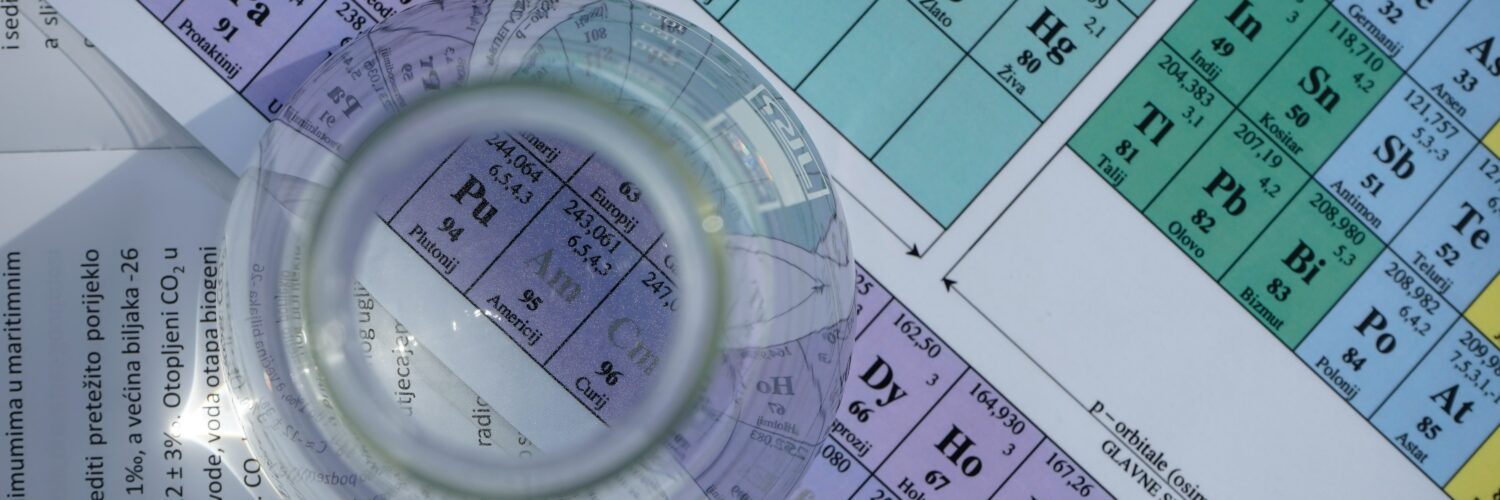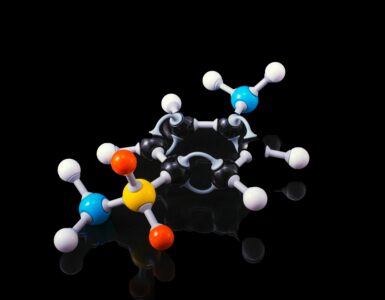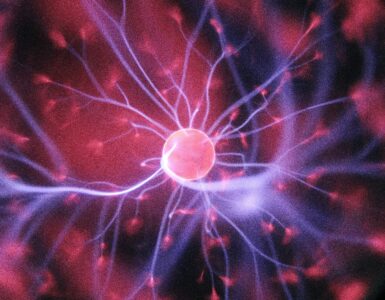A distinct feature of Chemistry, the periodic table is used across many sciences. It consists of all known chemical elements, both natural and artificial. The first periodic table was formulated in 1869 by the Russian chemist Dmitri Mendeleev. Today, it continues to be updated regularly as science progresses, with new elements being added to the periodic table. Today, we shall discuss interpreting the periodic table and talk about some of the group trends.
Groups and Periods
In the periodic table, chemical elements are arranged in increasing proton numbers. Vertical columns are known as groups, and horizontal rows are known as periods. So, what are some of the common trends seen in elements of the same groups and periods?
Groups
Within a group, elements have the same number of electrons in their outermost electron shell, and these electrons are known as valence electrons. An example would be the noble gases, which have an eight electrons’ filled valence electron shell, except for helium with two electrons. As there is an increase in the number of electron shells down a group, there is an increase in the atomic size between elements. This is due to the increased distance between the valence electron shell and the nucleus of elements.
Elements in the same group of the periodic table also have similar chemical properties, and this is due to them having the same number of valence electrons. They also have identical metallic or non-metallic properties and form ions with similar charges. Down a group, the metallic character of elements increases. This is due to the vast distance between the valence electrons and the nucleus, which causes electrostatic forces of attraction to be weak. Electrons are lost more quickly, resulting in a more metallic character.
Periods
In a period, all elements contain the same number of valence electron shells. We want to explain two aspects of periodicity, but first, we should let you know what periodicity means. Periodicity refers to the regular changes in both the chemical and physical properties of elements across a period.
Unlike in groups, the atomic size of elements across a period decreases. As we know, the number of valence electrons remains the same across a period. However, the number of protons in the nucleus and the number of electrons in the valence electron shell increase. This causes an increase in the electrostatic forces of attraction between valence electrons and the protons in the nucleus. As such, valence electrons are drawn closer to the nucleus, resulting in a decrease in the atomic size of elements.
Once again, unlike in groups, the metallic character of elements across a period of the periodic table decreases. This is due to the increasing strength of electrostatic forces of attraction between the nucleus and valence electrons. As such, it is harder for elements to lose electrons across a period.
Group I – Alkali Metals
The elements in the first group of the periodic table are called alkali metals because they form alkalis when reacted with water. They are highly reactive with one valence electron, they are highly reactive, and the valence electron is lost readily as alkali metals can attain noble gas configuration when they form a singly-charged cation. As such, you will often find them as part of compounds rather than on their own. Examples of such compounds include metal chlorides – alkali metals with chlorine.
Physically, they are in a solid-state. Alkali metals appear shiny, silvery, and soft. They are good conductors of electricity and heat, with low melting and boiling points. Alkali metals also have low densities, with some even being able to float on water. Lastly, they are malleable and ductile.
When reacted with water, alkali metals form an alkali and hydrogen gas. This alkali has a pH of above 7, so it turns litmus paper from red to blue. However, please do not try reacting them with water at home – some of them react violently and explosively.
Alkali metals react with non-metals to form ionic compounds as they can donate their valence electron to create compounds with a noble gas configuration. They are also potent reducing agents as they lose their valence electrons readily.
Down the group, density, atomic radii, reactivity, and the reducing power of elements increase. However, melting points and boiling points of features decrease down the group.
Group III to XII – Transition Metals
From the third to the twelfth group of the periodic table, transition metals have high melting points, boiling points, and density. Some transition metals have multiple oxidation numbers, which vary from compound to compound, unlike the other groups. One such example is iron, which has an oxidation number of +2 in FeCl2 but that of +3 in Fe2O3.
When transition metals form compounds, they usually have some colour. This colour may be different for the same compound, especially if water is present. Transition metals are also suitable catalysts. Catalysts are substances that increase the rate of reaction but remain chemically unchanged at the end of the experiment. This is done by providing the reaction with an alternative pathway with lower activation energy.
Group XVII – Halogens
The seventeenth group of the periodic table, halogens, are non-metals with seven valence electrons. This causes them to exist as diatomic molecules with atoms that are covalently bonded with each other. Down the group, the colours of elements become increasingly darker, which is seen from the change from pale yellow fluorine to black iodine. The state of halogens at room temperature also changes from solid to liquid to gas down the group.
Halogens have low melting and boiling points as they are simple covalent molecules with weak London dispersion forces between molecules. As such, little energy is needed to break these forces. The melting points and boiling points of elements increase down the group.
As they have seven valence electrons, halogen reacts readily by gaining one electron. This allows it to attain a noble gas configuration, forming a singly-charged anion. Halogens can displace each other in a halide solution. As the reactivity of halogens decreases down the group, more reactive halogens like fluorine and chlorine can displace less reactive halogens like bromine and iodine in a halide solution.
Halogens are also potent oxidising agents due to the seven valence electrons, and they also react with many different metals to form halide salts.
Just like every other group, the atomic radii of elements increase down the group. Also, as we mentioned earlier, the melting and boiling points of elements increase down the group. Reactivity, however, decreases down the group.
Group 0 – Noble Gases
Noble gases are monoatomic, colourless gases at room temperature and pressure. As they have a filled valence electron shell, noble gases are unreactive and have low melting points and boiling points. They are also insoluble in water.
Here are some uses of noble gases:
Helium – used to fill balloons as it is less dense than air. It is also used in oxygen tanks of divers.
Neon – used in neon lights as it glows in the presence of electricity.
Argon – used in electric light bulbs due to its inert nature. This prevents the filament from oxidising.
Krypton – used in lasers.
Xenon – used in headlights of vehicles and lighthouses.

Conclusion
The periodic table serves as one of the most important aspects of chemistry today. Each group and period in the periodic table have different properties, and however, they often share similar trends down a group or across a period. Today, we have covered some of the more critical groups in the periodic table. As such, you can now understand the properties and trends of the periodic table when you come across them in the future.





Add comment